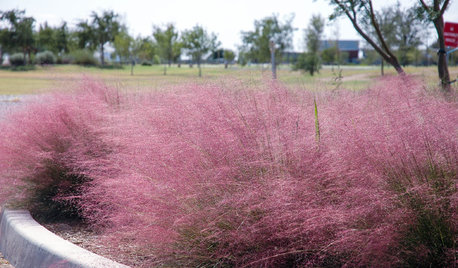fat roots - ficus
davidfromdetroit
16 years ago
Related Stories

Rooting for Indoor Trees
Houseplants tend to get all the glory indoors, but trees deserve their place in the sun — and in your living room, your entryway, your ...
Full Story
ARTThe Beauty of Bonsai — Living Art, Rooted in Harmony
Create your own emblem of nature's balance with an art form dating back 1,000 years
Full Story
HOUZZ TOURSHouzz Tour: Eclectic Chilean Home Embraces Trees
Ficus trees star in the interior courtyard of this Santiago house, which celebrates its design history, quirks and mix of styles
Full Story
MIDCENTURY HOMESHouzz Tour: Pools and Martinis Inspire a Palm Springs Remodel
Weighed down by black-heavy ’80s style, a California desert home gets a fun and lighthearted look just right for its midcentury roots
Full Story
HOUZZ TOURSHouzz Tour: Life in a 19th-Century Creamery
Starting with an empty storage barn, this family transformed a historic Minnesota creamery into a modern home that honors its roots
Full Story
HOUSEPLANTSPlay Up Some Fiddleleaf Figs for a Lively Indoor Tune
Strike a dramatic chord in a minimalist scene or a country note in a rustic setting — fiddleleaf fig plants harmonize with any style
Full Story
HOUSEPLANTSSee How Fiddleleaf Fig Trees Can Liven Up Your Decor
The tropical houseplant with big green leaves adds a cheerful and striking design element to rooms
Full Story
HOUSEPLANTS7 DIY Projects That Have Fun With Houseplants
Go beyond the ordinary when you add a touch of green to your interiors
Full Story
NATIVE PLANTS10 Top Plants Native to the Desert Southwest
Get a thriving garden despite unforgiving conditions with these tough, unthirsty, sun-loving beauties
Full Story
GARDENING FOR BIRDSFeed the Birds: 6 Plants for Abundant Winter Berries
Be kind to your fair feathered friends during lean food times by planting a shrub or tree loaded with nutritious snacks
Full Story







lucy
bonsaibean
Related Professionals
Wrentham Landscape Architects & Landscape Designers · Paradise Landscape Architects & Landscape Designers · Damascus Landscape Contractors · East Patchogue Landscape Contractors · Kerman Landscape Contractors · Lewisville Landscape Contractors · Overland Park Landscape Contractors · Red Oak Landscape Contractors · San Bruno Landscape Contractors · Bowie Decks, Patios & Outdoor Enclosures · Canton Decks, Patios & Outdoor Enclosures · Fishers Decks, Patios & Outdoor Enclosures · Larkspur Decks, Patios & Outdoor Enclosures · Lebanon Decks, Patios & Outdoor Enclosures · St John's Kirk Decks, Patios & Outdoor EnclosuresdavidfromdetroitOriginal Author
buddaboy
davidfromdetroitOriginal Author
davidfromdetroitOriginal Author